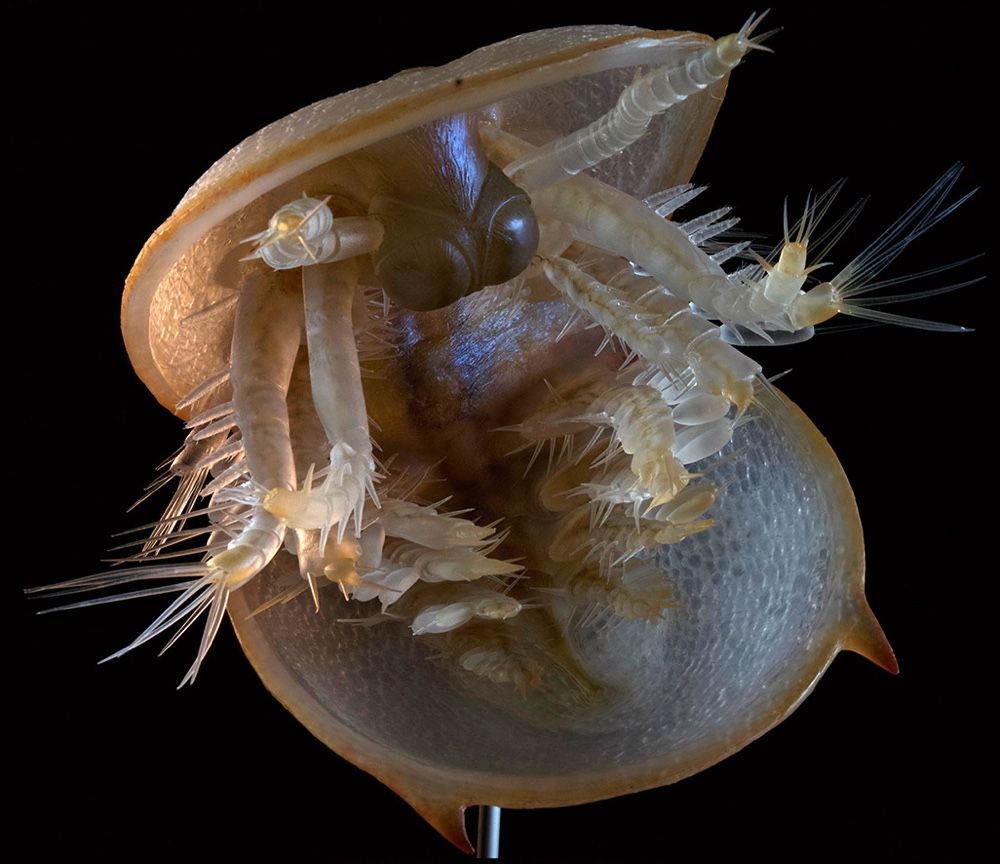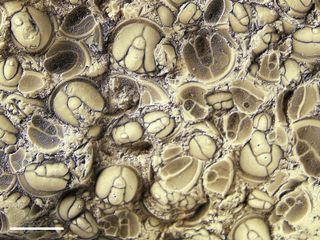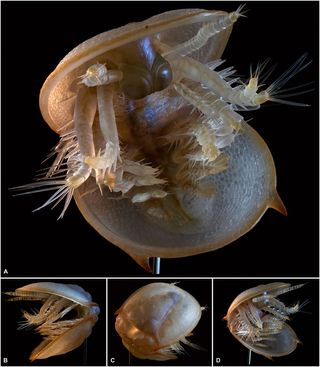500-Million-Year-Old Creature Looks Like Space Alien in Re-Creation

It looks like a space alien, or maybe a very deformed clam. But really, it's a re-creation of a 500-million-year-old life-form.
New images show a sculpture of Agnostus pisiformis, a now-extinct arthropod that used to live in what is today Scandinavia. These creatures, just four-tenths of an inch (1 centimeter) long when they were alive, are nevertheless known in exact anatomical detail because they've been preserved so perfectly in shale and limestones.
"The incredible degree of preservational detail means that we can grasp the entire anatomy of the animal, which, in turn, reveals a lot about its ecology and mode of life," Mats E. Eriksson, a geology professor at Lund University who commissioned the sculpted re-creation as part of a new paper in the journal Earth-Science Reviews, said in a statement.
According to that paper, A. pisiformis started life as a larva and developed into adulthood by repeatedly shedding and regrowing its hard exoskeleton. Its body was protected by two shields that looked a bit like clam shells when the animal curled up. Little is known about the creature's ocean-going lifestyle, but it probably plucked bits of organic matter out of the water for food. [Photos: Strange, Eyeless Creatures from the Cambrian Period]

The odd little critter is also useful to modern scientists as what's called an index fossil. Index fossils are fossils that appear in only a particular time period, so they're used to date layers of rock: If the fossils appear in a rock layer, there's no question about when that layer formed.
Artists at 10 Tons studio in Denmark created the new lifelike sculptures of A. pisiformis. The process was painstaking and involved multiple steps with hand-modeled clay, wax molds and silicon casts. The final sculptures were made with translucent silicon, and each is about the size of a dinner plate — much larger than the real creatures, which makes it easier to see their anatomy. The artists made a partially unrolled sculpture, mimicking the arthropod's likely positioning during swimming, as well as a rolled-up version to show how its exoskeletal shields would have protected it. They also made a model of the creature as it appears under a scanning electron microscope.

The researchers and artists hope their creations will go on display in a traveling exhibit about the bizarre animals of the Cambrian seas. In their paper, they called the period "one of the most exciting times in Earth history." The Cambrian period was the time of the Cambrian explosion, a rapid diversification of life that gave rise to a host of oddball creatures.
Sign up for the Live Science daily newsletter now
Get the world’s most fascinating discoveries delivered straight to your inbox.
Original article on Live Science.

Stephanie Pappas is a contributing writer for Live Science, covering topics ranging from geoscience to archaeology to the human brain and behavior. She was previously a senior writer for Live Science but is now a freelancer based in Denver, Colorado, and regularly contributes to Scientific American and The Monitor, the monthly magazine of the American Psychological Association. Stephanie received a bachelor's degree in psychology from the University of South Carolina and a graduate certificate in science communication from the University of California, Santa Cruz.











